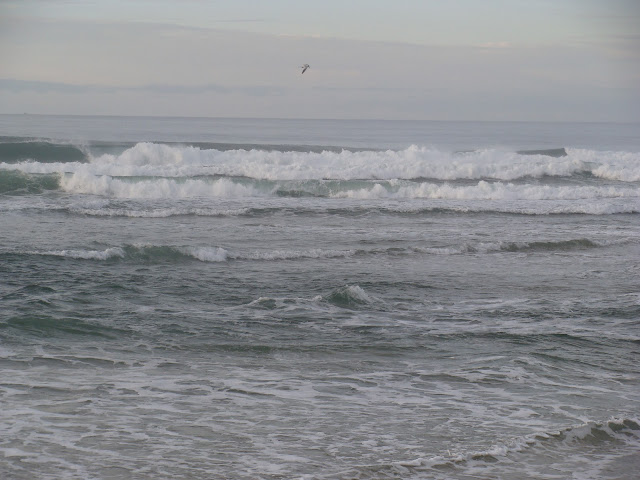The meeting was at 5:30 AM (ouch!!!) to load the boat and transport the team to the study site.
Station 1 was already on site (PT moored offshore,
click here for more information).
Station 2 included the ADP (Acoustic Doppler Profiler) and a PT, on an aluminium frame, located lower on the profile.
 |
| ADP (on top) and PT (on the leg) on station 2. |
Station 3 included an EMC (Electro-Magnetic Current meter) and a PT.
 |
| EMC (middle of the frame) and PT (rigth pole of the frame) on station 3. |
Station 4 included an ADV (Acoustic Doppler Velocimeter) and a PT.
 |
| ADV being deployed on the metal frame by Óscar, Maria and Bruno. |
On station 5, 6, and 7 the equipment was not fixed since we didn't know if overwash was going to occur or not.
 |
| Poles to fix PTs on stations 5, 6, and 7. |
Some people got excited about fixing the frames.
 |
| Erwan hammering the pole. |
Then we had a lot of waiting for the tide to rise... From 8:00 until 15:00 nothing to do............
 |
| For 7 long hours we rested, read, dip, chat, slept, took a walk. Thanks guys for keeping the good mood! |
And at the end of the day, this was the highest water level we got.
Our last action was to retrieve the PT that was moored offshore.On September, 19, the divers were Zapa and Nuno and RUSH team was Ana and Carlos.
 |
| Nuno, Ana and Zapa. |
The location of equipment was precise and we recovered the PT smoothly.
 |
| Here it is. Safe and sound. |

































